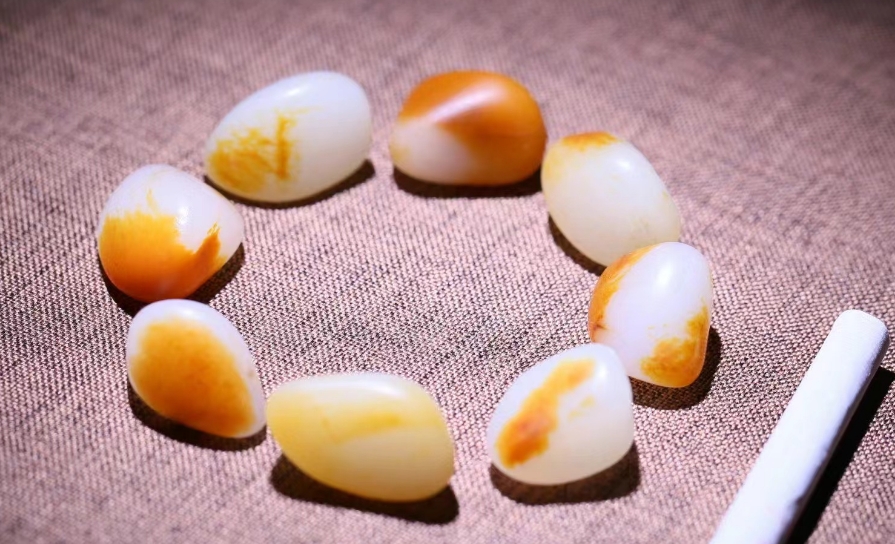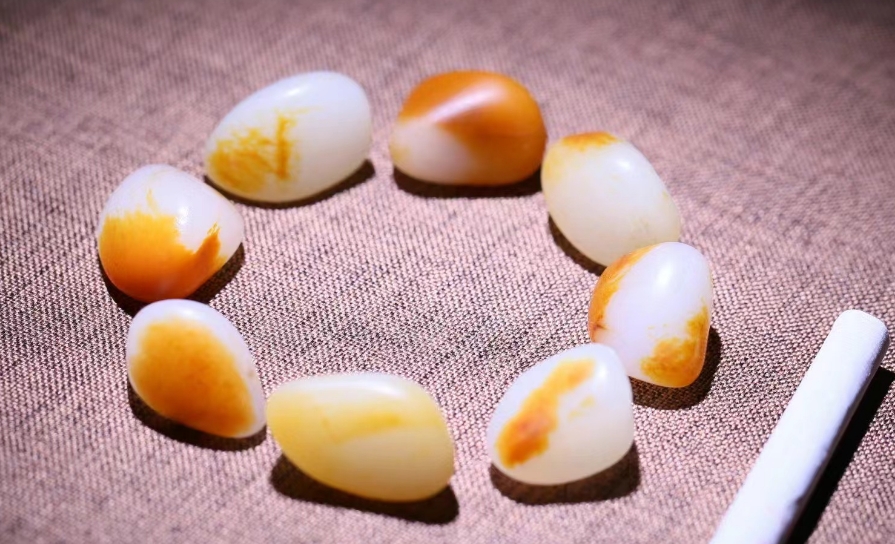
Nestled within the picturesque landscapes of China’s Xinjiang region lies a treasure of unparalleled beauty and cultural significance: Hotan Nephrite jade. Among its many coveted varieties, the single-seed Hotan jade stands out for its exceptional history, quality, and scarcity. Join us on a journey as we uncover the mystique of Hotan jade and its single-seed type, exploring their origins, characteristics, and timeless allure.

Hotan Nephrite jade, often revered as the “King of Jade” in Chinese culture, traces its roots back to the majestic Kunlun Mountains in Xinjiang. For centuries, this gemstone has been cherished for its purity and elegance, earning adoration from emperors, scholars, and artisans. Its journey from the depths of the earth to the hands of craftsmen serves as a testament to its enduring allure and cultural significance.

What sets Hotan jade apart is its unmatched purity and clarity. Unlike other varieties, Hotan jade boasts flawless translucency and subtle texture, attributed to the unique geological conditions of the region. Its exquisite translucency and delicate texture have earned it a reputation as a symbol of prestige and prosperity, treasured for its timeless elegance. Beyond its aesthetic appeal, Hotan Nephrite jade holds a deep spiritual and cultural significance in Chinese tradition. In ancient times, it was believed to possess mystical powers and was utilized in rituals and ceremonies. Even today, Hotan jade continues to symbolize good fortune, longevity, and harmony, serving as a cherished heirloom passed down through generations.

Formation of Single-Seed Hotan Jade – the Magic Lonely Stone
At the pinnacle of Hotan jade lies the elusive single-seed variety, characterized by its unique texture, exquisite translucency, and unmatched beauty. The formation of single-seed Hotan jade is a captivating tale of nature’s artistry and the passage of time. Over billions of years, raw stones from the Kunlun Mountains journey through mountain streams before finding their way to the Yulong Kashgar River. Here, they undergo erosion and transformation, gradually evolving into individual pieces of single-seed Hotan Jade. For generations, the value of single-seed jade has been known primarily to the Chinese, with most aware of its priceless worth but never having the chance to possess a true piece. Understanding its formation process reveals the incredibly low inventory of single-seed jade, with the exceptionally exquisite pieces being even scarcer. In Xinjiang Hotan, a group known as “jade diggers” spends years searching for beautiful single-seed jade along the Yulong Kashgar River. Once found, these gems are immediately sought after, often ending up in the hands of China’s top collectors. These elite collectors have a penchant for accumulating single-seed jade in various shapes, colors, and skin textures, eagerly acquiring any high-quality pieces they come across.

Despite its timeless allure, authentic Hotan jade faces challenges in today’s world. With the rise of mass production and imitation products, genuine Hotan jade is becoming increasingly scarce. To preserve this ancient tradition, it is crucial to support sustainable practices and ethical sourcing, ensuring the legacy of Hotan Nephrite jade for future generations. Xinjiang Hotan Nephrite jade stands as a testament to the enduring beauty of nature and the rich cultural heritage of China. Its timeless elegance, cultural significance, and mystical allure continue to captivate the hearts of collectors and enthusiasts worldwide. As we continue to explore the mystique of Hotan jade, let us celebrate its legacy and honor the artisans who have dedicated themselves to preserving this invaluable treasure for generations to come.

